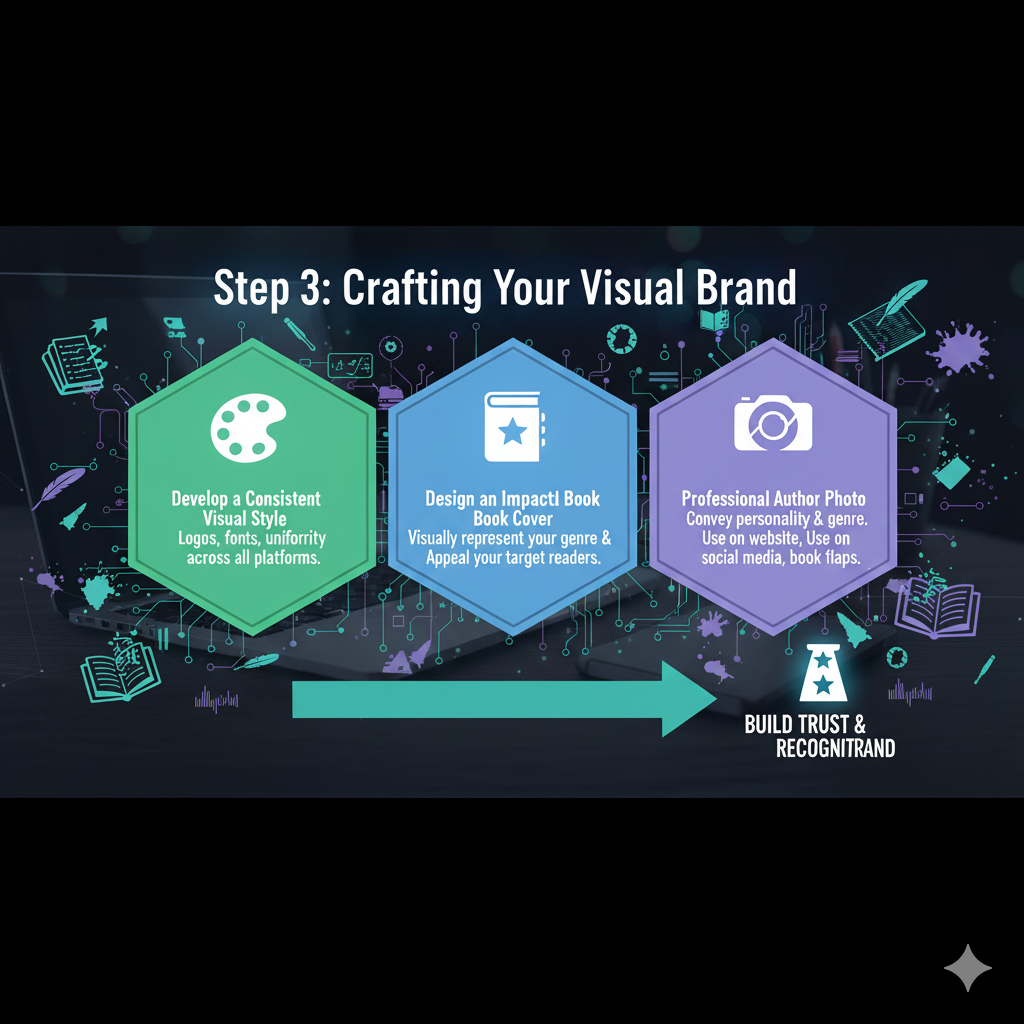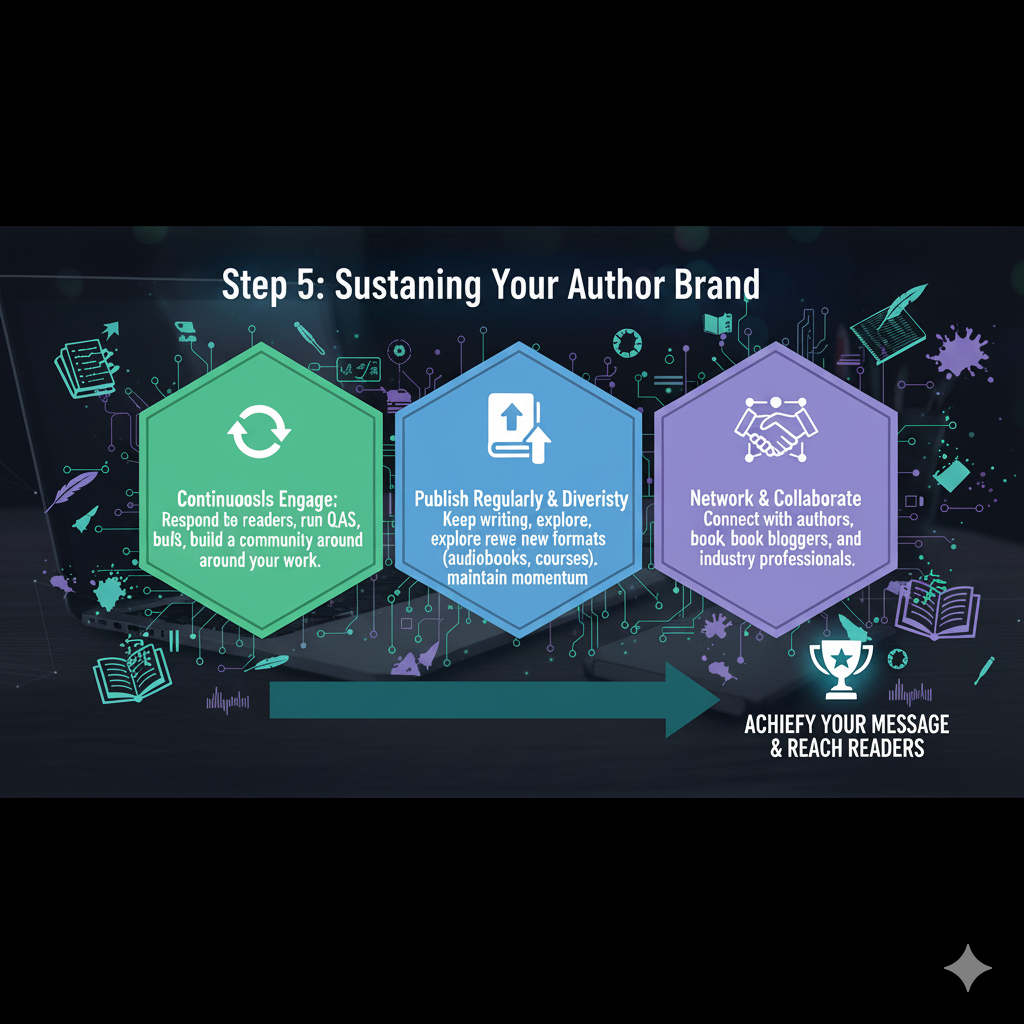
In the modern literary landscape, simply writing a great book is no longer enough.
The marketplace is crowded, and readers have more choices than ever before.
To stand out, connect with your ideal audience, and build a sustainable career, you need something more: a powerful, recognizable author brand.
For beginners, the term “branding” can sound intimidating—like something reserved for major corporations or celebrity authors.
However, an author brand is simply the perception and emotional connection that readers have with you and your work.
It is the promise of a certain kind of reading experience every time they see your name.
This comprehensive guide will walk you through the essential steps to build your author brand from the ground up, turning you from an aspiring writer into a trusted literary voice.

Part I: The Foundation – Defining Your Author Identity
The first and most critical step in author brand building is introspection.
You cannot project a consistent image until you know exactly what that image is.
1. Pinpoint Your Core Brand Message
Your brand message is the single, overarching idea that defines your work.
It answers the question: What do I stand for as an author?
Think about the themes, values, and emotions that permeate your writing.
For a thriller writer, the message might be “gripping suspense and moral complexity.”
For a non-fiction author on productivity, it might be “actionable strategies for a simplified life.”
This message must be the foundation of all your branding efforts.
2. Identify Your Target Audience
Your brand is not for everyone, and trying to appeal to everyone means appealing to no one.
Define your ideal reader with as much detail as possible.
What genres do they read?
What are their demographics (age, location, income)?
More importantly, what are their psychographics (hopes, fears, interests)?
Understanding your audience dictates your tone, your visual style, and where you spend your marketing energy.
3. Develop a Signature Style and Voice
A signature style is what makes your work immediately recognizable, even without your name on the cover.
This includes your writing voice (formal, witty, sparse, flowery) and the types of stories you tell (e.g., character-driven sci-fi, cozy mysteries).
Your brand voice should extend beyond your books and into your blog posts, social media updates, and email newsletters.
Consistency in voice builds familiarity and trust with your readers.

Part II: The Visual Identity – Consistency is Key
Visuals are the first impression your brand makes, and consistency is paramount.
4. Master Consistent Visual Branding
Select a consistent color palette, typography, and set of imagery that reflects your genre and brand message.
For a romance author, this might be soft pastels and elegant script fonts.
For a horror author, it could be dark, high-contrast colors and bold, distressed fonts.
This visual identity must be applied everywhere: your book covers, your website, your social media banners, and your email templates.
5. Professional Author Photography
Your author photo is the face of your brand.
It should be high-resolution, professionally taken, and, most importantly, on-brand.
A serious non-fiction author should have a different photo than a lighthearted young adult fantasy writer.
The photo should convey the tone of your work and be consistent across all platforms, from your Amazon Author Central page to your website bio.
Part III: The Digital Hub – Your Online Presence
In the digital age, your online presence is the central nervous system of your author brand.

6. Create a Professional Author Website
Your author website is your single most important branding tool—it is the one piece of digital real estate you fully control.
It should serve as the central hub for all your activities.
Key pages should include:
A dedicated Books/Works page with buy links.
A compelling, on-brand About/Bio page.
A prominent Email Sign-up form (more on this below).
A Contact page.
Ensure your website is mobile-friendly, fast-loading, and visually consistent with your book covers.
7. Harness the Power of Email Marketing
Social media platforms change their algorithms constantly, making it difficult to reach your audience.
Email is the most direct and reliable way to communicate with your most loyal readers.
Start building your email list from day one by offering a compelling Reader Magnet (a free short story, a bonus chapter, a checklist, or a guide) in exchange for a sign-up.
Use your newsletter to share exclusive updates, personal stories, and behind-the-scenes content that reinforces your authentic brand voice.

8. Strategic Social Media Engagement
You do not need to be on every platform.
Instead, choose one or two platforms where your target audience is most active and focus your energy there.
Your social media presence should be an extension of your brand, not a separate entity.
Share content that aligns with your core message and provides value, whether it is writing tips, historical facts related to your setting, or engaging with other authors in your genre.
Crucially, engage with your followers—respond to comments, ask questions, and participate in relevant conversations to build a community.
Part IV: The Ongoing Work – Maintenance and Growth
Building an author brand is not a one-time task; it is an ongoing process of maintenance and growth.
9. Offer Value Through Consistent Content
Establish yourself as an authority or a reliable source of entertainment by consistently offering valuable content.
This could be through a regular blog, a YouTube channel, or a podcast.
For a non-fiction author, this means sharing insightful, well-researched articles.
For a fiction author, it means sharing snippets, world-building details, or thoughtful reflections on the craft of writing.
The goal is to provide something of value to your audience even when you are not actively selling a book.
10. Network, Collaborate, and Cross-Promote
The writing community is a resource, not a competition.
Attend literary events, join writing groups, and, most importantly, collaborate with other authors in your genre.
Cross-promotion—such as doing a joint giveaway, interviewing each other, or sharing each other’s book launches—exposes your brand to a new, relevant audience.
These relationships build your credibility and expand your reach organically.
11. Leverage Reviews and Testimonials
Social proof is a cornerstone of brand trust.
Actively encourage readers to leave honest reviews on platforms like Amazon, Goodreads, and retailer sites.
Positive reviews and testimonials should be prominently featured on your website and in your marketing materials.
They serve as independent validation of the promise your brand makes to its readers.
12. Embrace Authenticity and Vulnerability
In a world of polished, often generic marketing, authenticity is your secret weapon.
Readers connect with the person behind the pages.
Be willing to share your struggles, your process, and the personal reasons why you write what you do.
This vulnerability fosters a deep, emotional connection that transforms casual readers into lifelong fans.
Your brand should feel like a genuine reflection of you, the author.

Conclusion: Your Brand is Your Legacy
Author brand building for beginners is a marathon, not a sprint.
It requires patience, consistency, and a deep understanding of who you are and who you write for.
By defining your core message, establishing a consistent visual identity, and building a robust digital hub, you are not just marketing your books—you are building a legacy.
Start small, stay focused on providing value, and above all, remain true to the unique voice that only you possess.
Your author brand is the foundation upon which a long, successful, and fulfilling writing career is built.
Take the first step today.
